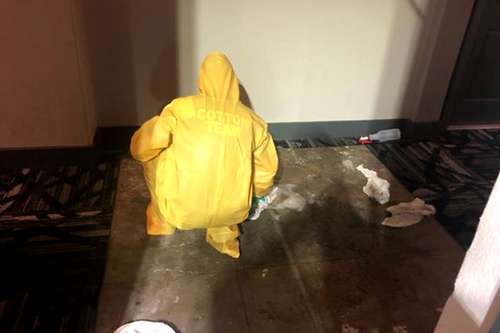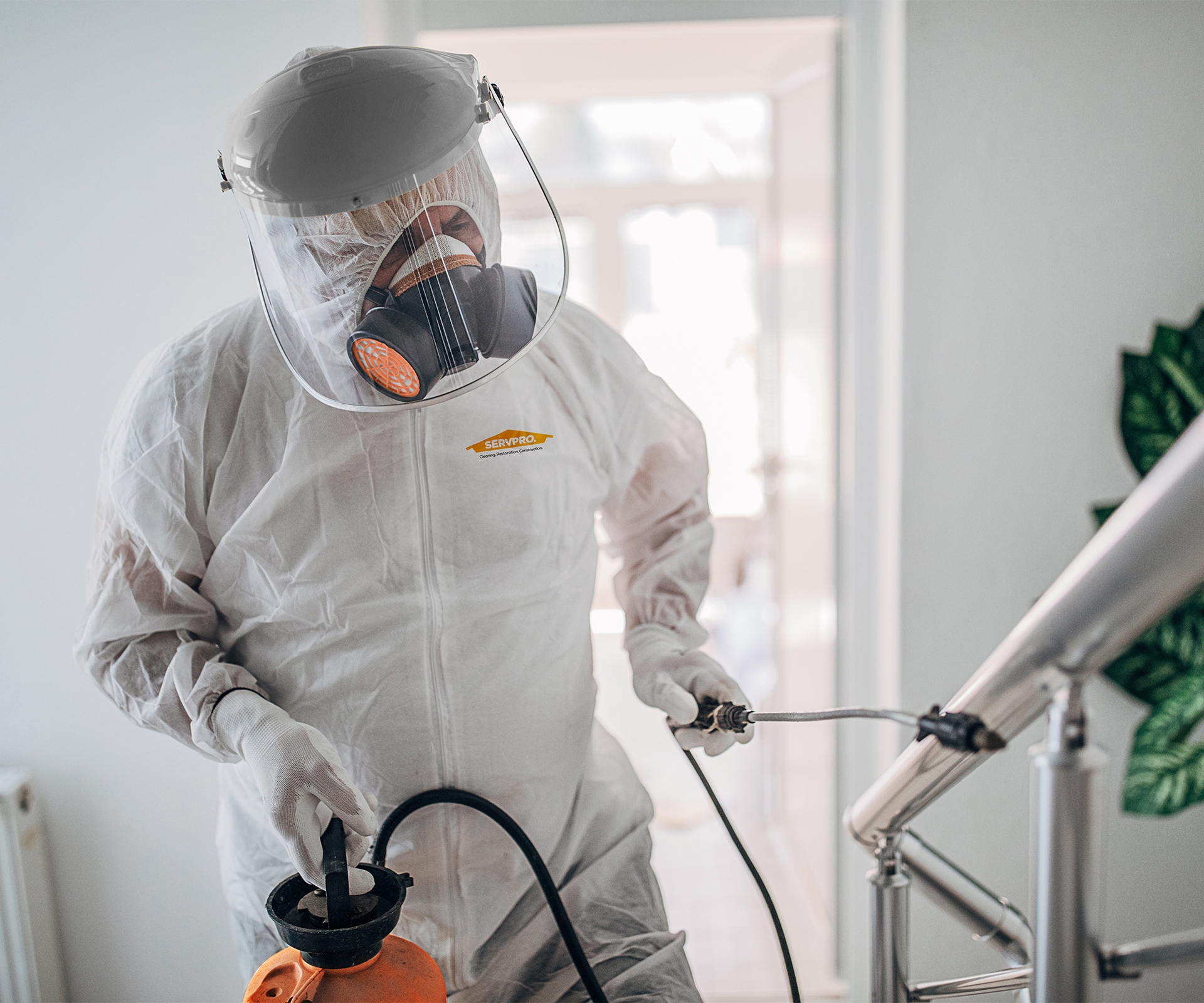Expert Biohazard Clean-up for Criminal Activity Scenes, Trauma Incidents, and Contaminated Rooms
In the realm of professional biohazard cleaning, careful interest to information and adherence to safety procedures are extremely important. When confronted with the consequences of a crime scene, trauma occurrence, or any type of contaminated area, the importance of correct cleaning can not be understated. The intricacies and threats related to biohazards need specialized understanding and knowledge to make certain efficient remediation. As we dig right into the ins and outs of biohazard cleanup for these delicate settings, a deeper understanding of the challenges and essential procedures involved will arise, losing light on the crucial duty of professional clean-up solutions in recovering safety and satisfaction.

Significance of Biohazard Cleanup
Biohazard cleaning following criminal offense scenes and trauma incidents is vital for guaranteeing the security of individuals and the setting. When these events occur, they often leave behind a variety of biohazards such as blood, bodily liquids, and other potentially contagious materials. These substances can nurture hazardous virus like infections and microorganisms, posturing serious health threats if not properly cleaned and sanitized.
Specialist biohazard clean-up services are educated to manage these dangerous materials securely and effectively. They have the essential equipment, such as individual safety equipment and specialized cleansing agents, to completely sanitize the impacted locations. By leaving the cleaning to experienced specialists, people can avoid direct exposure to harmful pathogens and avoid the spread of contagious diseases.
Moreover, appropriate biohazard cleanup is important for shielding the environment. Improper disposal of biohazardous materials can contaminate dirt, water resources, and air, presenting a danger to wild animals and the ecosystem. By complying with rigorous cleaning procedures, experts can ensure that biohazards are securely removed and dealt with based on guidelines, reducing the danger of ecological contamination.
Sorts Of Biohazards Encountered
Various hazardous materials typically experienced in criminal activity scenes and injury incidents present considerable health and wellness risks if not handled correctly. Blood and bodily liquids are among the most common biohazards located in these situations. These liquids can lug virus such as HIV, liver disease B and C, and other unsafe microorganisms. In addition, cells, organs, and body parts can additionally posture severe health and wellness dangers due to possible contamination.
Another sort of biohazard typically experienced is sharp things like needles, broken glass, and other things that can cause injuries and transfer infections. Chemical hazards are additionally a problem, as criminal activity scenes might include substances like tear gas, pepper spray, or medication manufacturing products that call for customized handling and disposal treatments to stop further damage.
Additionally, mold and mildew and germs growth can occur in spaces where disintegration or long term exposure to moisture has actually happened. These bacteria can launch toxic substances and irritants right into the air, posturing respiratory system risks to those exposed. In general, biohazard cleaning specialists should be fully equipped and trained to efficiently deal with these numerous kinds of hazardous materials to ensure the security of themselves and others.
Equipment and Protective Gear
When addressing the critical task of taking care of biohazards experienced in criminal activity scenes and trauma occurrences, the usage of proper tools and protective gear is vital to guaranteeing the safety of individuals entailed in the cleaning process. Specialized cleansing tools like biohazard sharps, bags, and anti-bacterials containers are needed for the safe collection and disposal of contaminated products. Guaranteeing that all equipment is properly maintained, on a regular basis checked, and used according to safety guidelines is essential in decreasing biohazard cleanup meaning the risk of exposure to biohazards during cleaning operations.
Cleanup Process and Strategies
Detailed and effective cleaning of biohazardous products from criminal activity scenes and injury incidents calls for careful attention to detail and adherence to stringent safety methods. The cleaning process normally entails a number of key actions. Initially, the area should be assessed to establish the degree of contamination and the appropriate cleaning techniques needed. Next off, all biohazardous products, including blood, physical fluids, and tissue residues, need to be carefully gotten rid of and thrown away in conformity with neighborhood policies.
Complying with the removal of biohazardous products, the damaged area goes through a detailed cleaning and sanitation procedure. This action involves using specialized cleansing representatives and equipment to make sure that all traces of contamination are eradicated. After cleaning, the area goes through extensive screening to verify that it is risk-free and totally free of any kind of remaining biohazards.

Decontamination and Disposal Treatments
To guarantee comprehensive purification and proper disposal of biohazardous products, following the meticulous cleaning process, certain treatments should be thoroughly followed with stringent adherence to safety and security protocols. Purification includes the removal or neutralization of contaminants to reduce the danger of exposure and spread of dangerous materials. This process typically consists of cleaning, sanitizing, and sanitizing the affected area visit this web-site utilizing specific tools and EPA-approved chemicals.
Once decontamination is completed, appropriate disposal of biohazardous products is important to avoid further contamination or injury. Biohazardous waste, such as physical liquids or blood-soaked materials, need to be thoroughly accumulated, packaged, and classified according to regulative standards. ATP testing. These products are after that carried to accredited facilities for disposal with ideal networks, guaranteeing conformity with local, state, and federal regulations

Verdict
Finally, expert biohazard cleanup is crucial for ensuring the safe and efficient elimination of unsafe products from criminal offense scenes, trauma occurrences, and infected spaces. By making use of specific equipment, safety equipment, and complying with proper cleanup processes and methods, biohazard clean-up groups can effectively get rid of and decontaminate of biohazards, lessening the risk of exposure and damage to people and the environment.
As we dive into the intricacies of biohazard cleanup for these sensitive environments, a deeper understanding of the obstacles and important treatments entailed will certainly emerge, dropping light on the crucial function of expert cleaning solutions in recovering security and tranquility of mind.
Specialist biohazard cleaning solutions are trained to take care of these dangerous products safely and successfully. By following stringent cleanup procedures, experts can ensure that biohazards are securely eliminated and disposed of in conformity with regulations, lessening the danger of environmental contamination.
On the whole, biohazard cleaning professionals must be experienced and fully equipped to effectively deal with these numerous types of hazardous products to guarantee the safety of themselves and others.
When resolving the vital task of taking care of biohazards run into in crime scenes and trauma cases, the use of correct tools and protective equipment is critical to ensuring the security of people involved in the cleaning process.
 Michael Bower Then & Now!
Michael Bower Then & Now! Hailie Jade Scott Mathers Then & Now!
Hailie Jade Scott Mathers Then & Now! Nancy McKeon Then & Now!
Nancy McKeon Then & Now! Barbara Eden Then & Now!
Barbara Eden Then & Now! Katey Sagal Then & Now!
Katey Sagal Then & Now!